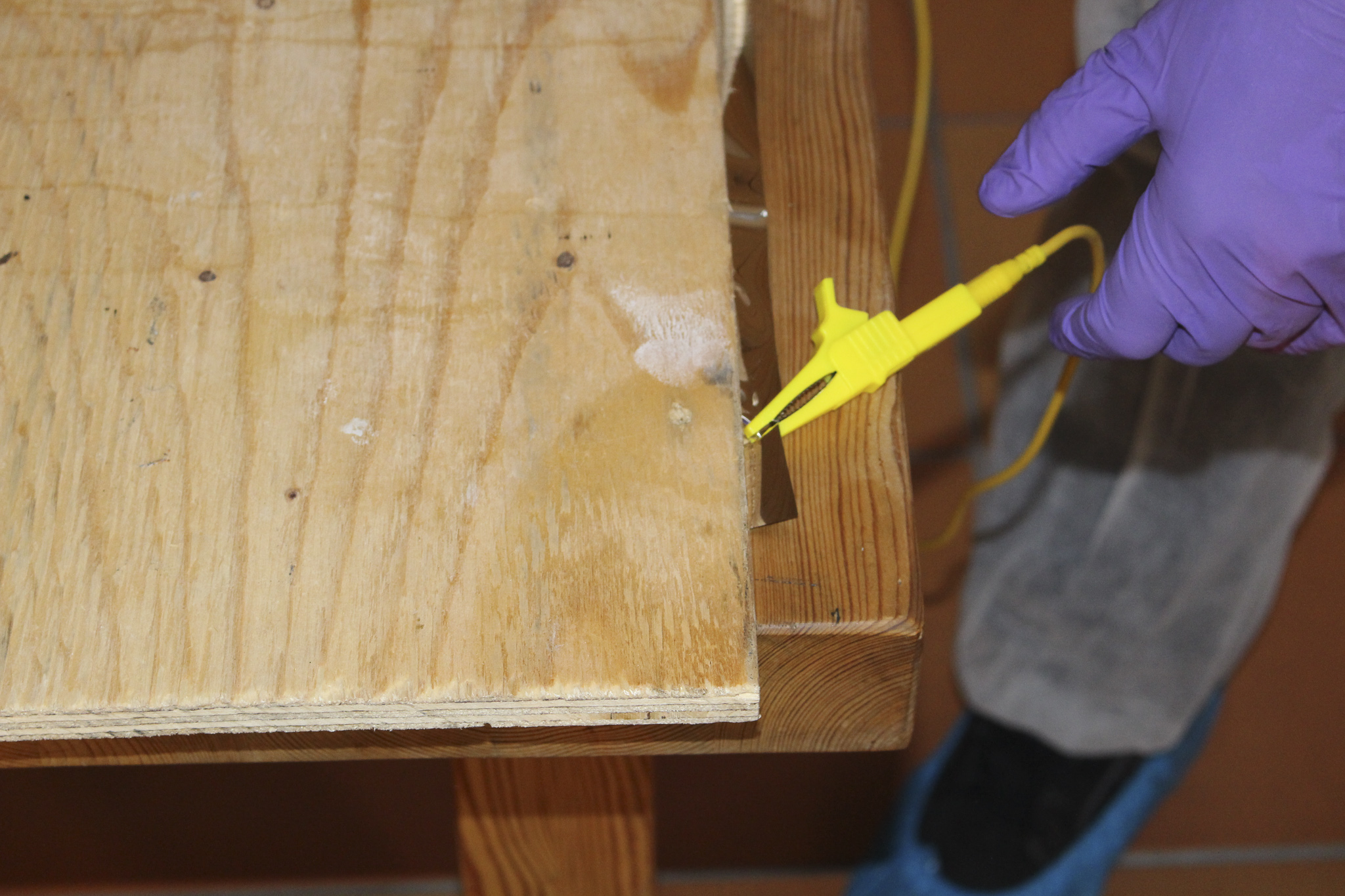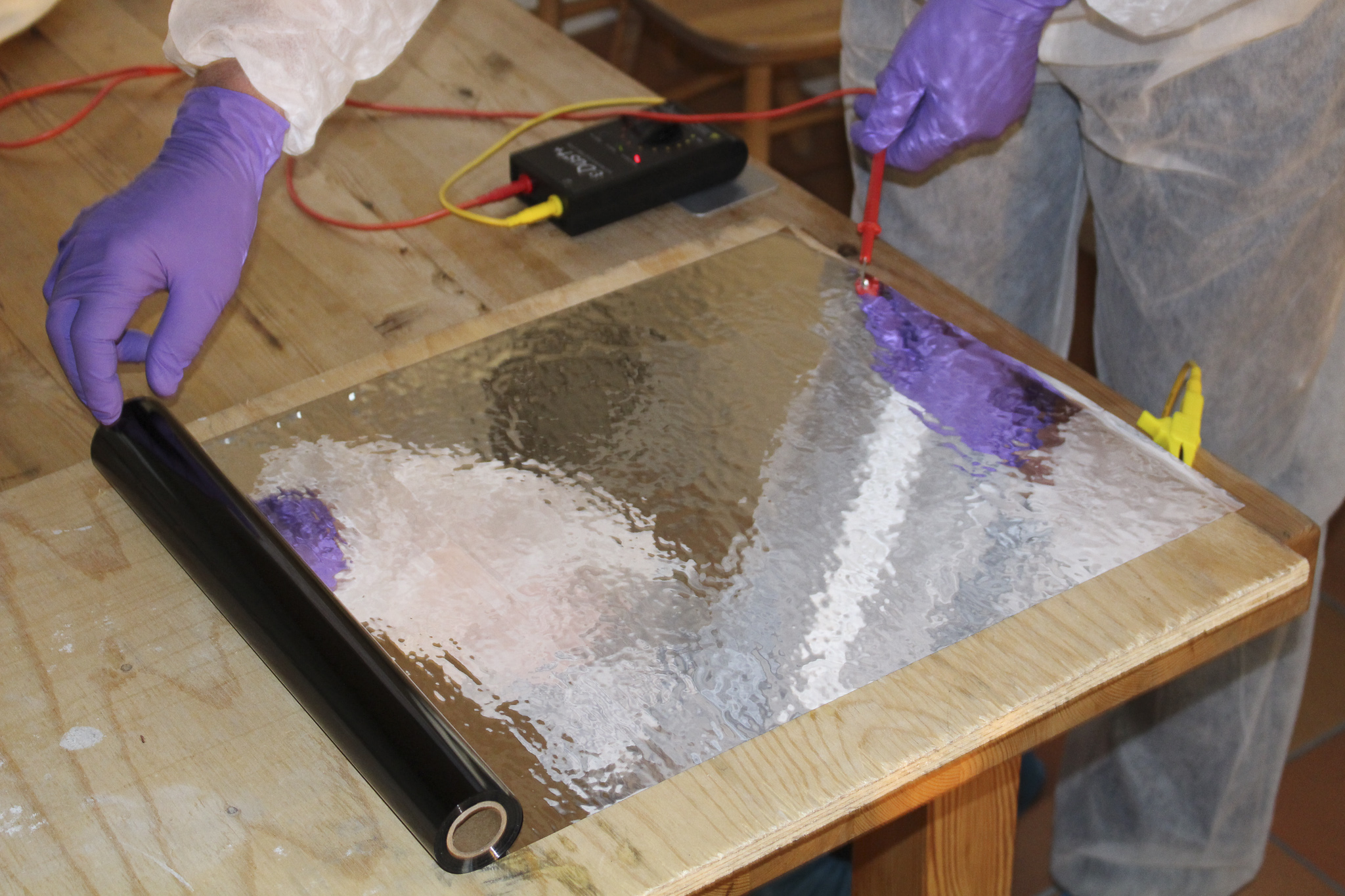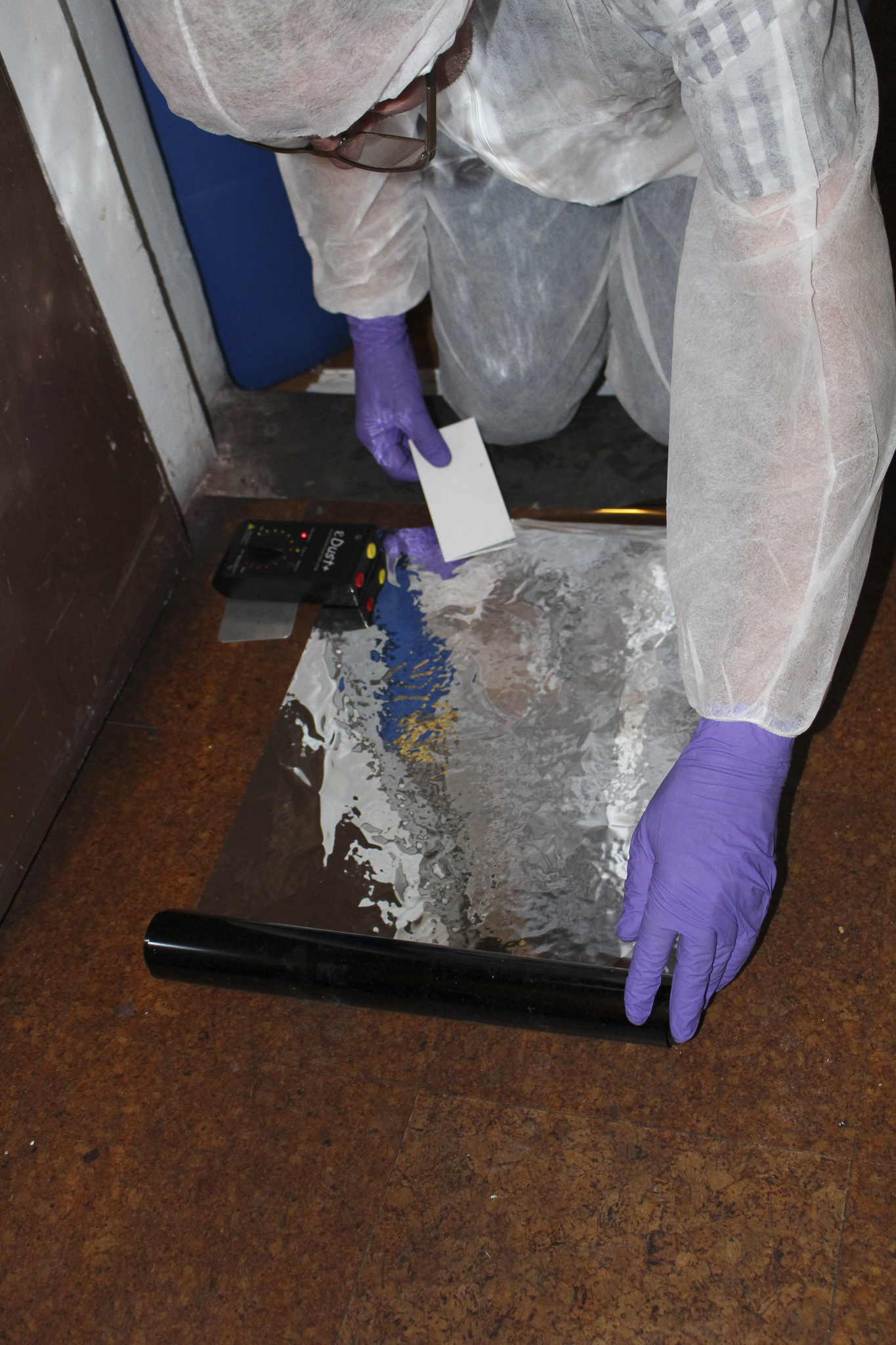
> eDust+
Lift dustprints from any surface.
> The eDust+ unit
Dust is usually dense with particles such as textile fibres, skin cells, pollen, asphalt or concrete. This means that shoe soles covered in dry dust can give off excellent dustprints on floor and paper. These prints may be lifted by applying an electrostatic charge. Our dustprint lifter, the eDust+, is designed to generate good results on most surfaces.
The eDust+ works with different surfaces. Under normal conditions, the built-in grounding and high voltage connectors may be used to lift a print from a floor. If the electrical ground is poor, like on a plasterboard, you can use the loose grounding cable, the high voltage probe and a lifting film. Put a piece of the lifting film under the object to improve the ground.
> Contents
1. Main unit
2. High voltage probe
3. Ground cable
4. Ground plate
5. Plastic flattener
6. Carrying case
7. Lifting film 0.4 x 30 m
> Specifications
Input voltage: 9 Volt battery
Output voltage: 0 to 12 kV (negative)
Output current: 0 to 150 µA
> Ground Connection
If a particular surface, like a wooden or plastic floor, does not provide enough grounding connection, there are ways to increase the ground voltage. Use an additional piece of lifting film, approximately 30 x 40 cm in size and place it with the silver side facing the floor roughly 3 to 4 cm away from the main piece of lifting film, and overlapping a small part of the ground plate. Proceed to use the eDust+ unit in the normal operating way.
> Storage
Once you have lifted a dustprint onto the film, it will not be released from the film if physical touch is avoided. Avoid touching the film then roll it back onto the cardboard tube and bring it to the lab for comparison.
> Surface area
The eDust+ can be used on surface areas of varying sizes. If you wish to lift dust from a larger area, just release more lifting film from the roll. Make sure that the ground is adequate and reinforce the ground using the technique described above if necessary.
> Related
We also offer the eDust Lifting Plate, which is designed to lift dustprints from paper sheets found at a crime scene. The Lifting Plate comes with a carrying case which makes it easy to bring to the crime scene. Using the eDust+ unit with the Lifting Plate, investigators can examine paper sheets at the crime scene and reduce time spent on packaging cataloguing.


Electrostatic Dustprint Lifter
Dust is usually dense with particles such as textile fibres, skin cells, pollen, asphalt or concrete. This means that shoe soles covered in dry dust can give off excellent dustprints on floor and paper. These prints may be lifted by applying an electrostatic charge. Our dustprint lifter, the eDust+, is designed to generate good results on most surfaces.




The eDust+ works with different surfaces. Under normal conditions, the built-in grounding and high voltage connectors may be used to lift a print from a floor. If the electrical ground is poor, like on a plasterboard, you can use the loose grounding cable, the high voltage probe and a lifting film. Put a piece of the lifting film under the object to improve the ground.




Easy Storage and Transportation
Once you have lifted a dustprint onto the film, it will not be released from the film if physical touch is avoided. Avoid touching the film then roll it back onto the cardboard tube and bring it to the lab for comparison.
Improving the Ground Connection
If a particular surface, like a wooden or plastic floor, does not provide enough grounding connection, there are ways to increase the ground voltage. Use an additional piece of lifting film, approximately 30 x 40 cm in size and place it with the silver side facing the floor roughly 3 to 4 cm away from the main piece of lifting film, and overlapping a small part of the ground plate. Proceed to use the eDust+ unit in the normal operating way.
Surface Areas
The eDust+ can be used on surface areas of varying sizes. If you wish to lift dust from a larger area, just release more lifting film from the roll. Make sure that the ground is adequate and reinforce the ground using the technique described above if necessary.




Related Products
We also offer the eDust Lifting Plate, which is designed to lift dustprints from paper sheets found at a crime scene. The Lifting Plate comes with a carrying case which makes it easy to bring to the crime scene. Using the eDust+ unit with the Lifting Plate, investigators can examine paper sheets at the crime scene and reduce time spent on packaging cataloguing.
Contents
- Main unit
- High voltage probe
- Ground cable
- Ground plate
- Plastic flattener
- Carrying case
- Lifting film 0.4 x 30 m
Specifications
- Input voltage: 9 Volt battery
- Output voltage: 0 to 12 kV (negative)
- Output current: 0 to 150 µA

